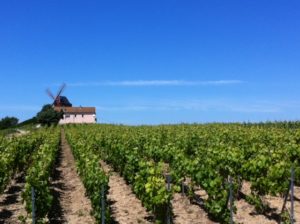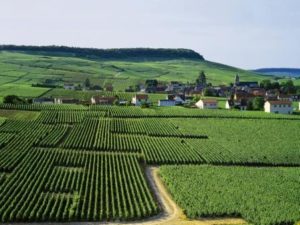- Wine Tour Destinations
The Champagne-Ardenne encompasses 
The area is split into four main regions, La Montagne de Reims, La Vallée de la Marne, La Côte des Blancs and La Côte des Bars. La Côte des Bars is the most southerly located region in the Champagne-Ardenne and it is split further into two main sub-regions Bar-Sur-Aube and Bar-Sur-Seine. In the North of the Champagne-Ardenne, the three main territoires are La Montagne de Reims, La Vallée de la Marne and La Côte des Blancs. These three regions produce the best quality grapes and many Champagne producers combine grapes from all three areas to produce the best Champagne.
La Montagne de Reims
Pinot Noir (40%) and Pinot Meunier (36%)
Landscape and Location
Large, forest-capped area located between Epernay and Reims
Soil
Chalk, with mixture of clay and sand
Grand Cru Villages
Bouzy, Ambonnay, Louvois, Verzy, Verzenay, Mailly-Champagne, Sillery, Puisieulx, Beaumont-sur-Vesle
Type of Champagnes
Rich, full bodied Champagnes
Principal Grape Variety
Pinot Meunier (62%) Chardonnay and Pinot Noir grapes do also grow here
Landscape and Location
North West of the Montage des Reims and stretches east along the River Marne
Soil
Chalk, limestone, clay, marl, sand, flint
Grand Cru Villages
Aÿ, Tours-sur-Marne
Type of Champagnes
Easy-drinking, fruity wines, great for drinking young, and tend to please drinkers who prefer richness over crispness
Principal Grape Variety
Chardonnay (82%)
Landscape and Location
Lies south of Epernay, stretching 20km towards Bergères-lès-Vertus
Soil
Chalk
Grand Cru Villages
Avize, Chouilly, Cramant, le Mesnil-sur-Oger, Oger, Oiry
Type of Champagnes
Wines produced from these grapes are considered the finest and most sought after in all Champagne. Traditional characteristics of the Chardonnay grape are freshness, with light and delicate aromas, providing Champagne with elegance and finesse
Within the Champagne region, grapes are rated based on what village the 
Villages are given a classification between 80% and 100% and this indicates the quality of the grapes grown in that particular area. The highest rated villages, with 100% quality, are known as Grand Crus. There are 17 villages rated as Grand Cru. The second tier of vineyards are known as Premier Cru and demonstrate a quality of between 90-99%. There are approximately 40 villages with Premier Cru status. The remainder of the villages fall under just ‘cru’ status and are rated between 80-89% quality.

